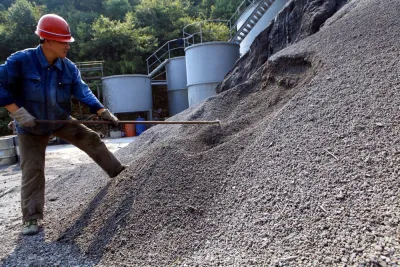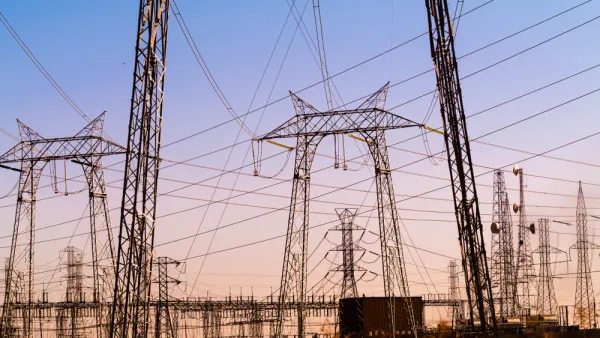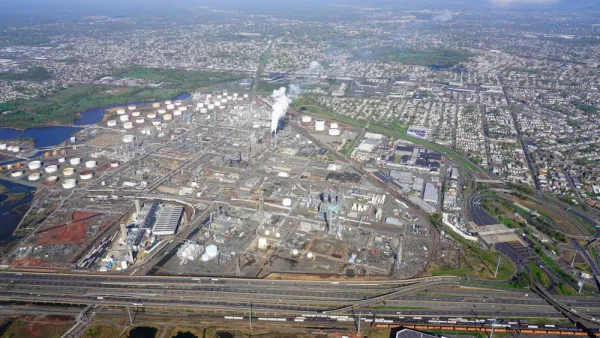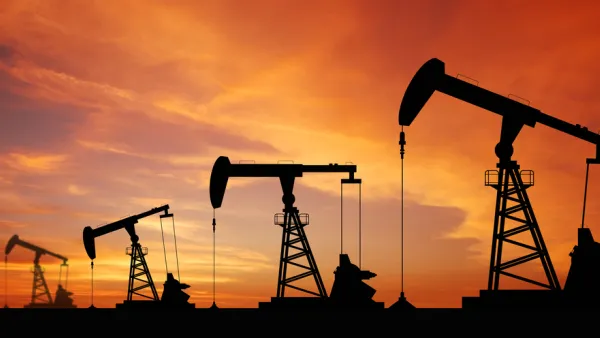President Trump and his cabinet have been busy rolling back environmental regulations and promoting coal burning, and now they claim credit for a reduction in greenhouse gas emissions last year even greater than in 2016.

The U.S. Environmental Protection Agency released 2017 greenhouse gas data collected under the EPA’s Greenhouse Gas Reporting Program showing that U.S. greenhouse gas emissions decreased by 2.7 percent from 2016 to 2017. The decrease is 42 percent greater than the 2016 decrease of 1.9 percent from 2015 to 2016, based on the U.S. Greenhouse Gas Inventory.
- The largest decreases occurred from large power plants, declining 4.5 percent since 2016, and 19.7 percent since 2011.
- Direct emissions are reported from nine industry sectors, about half of total U.S. greenhouse gas emissions. While oil and gas production is included, tailpipe emissions from the transportation sector are not.
"[T]he numbers also underscore that the administration has not been able to stop the rapid pace of coal plant shutdowns," writes Timothy Gardner for Reuters.
Natural gas releases far less carbon dioxide when burned than coal and a domestic abundance of gas has driven a wave of closures of coal plants. In 2017 utilities shut or converted from coal-to-gas nearly 9,000 megawatts (MW) of coal plants.
Note that the Greenhouse Gas Reporting Program reports on seven types of greenhouse gas emissions, including methane, associated with natural gas-burning power plants. Emissions are recorded as carbon dioxide equivalents.
Gardner describes the attempts by the Energy Secretary Rick Perry to subsidize aging coal and nuclear plants, a program which was rebuffed by the Federal Energy Regulatory Commission and dropped "amid opposition from the president’s own advisers on the National Security Council and National Economic Council," reported POLITICO on Oct. 15.
EPA Administrator Doug Wheeler claimed that the emissions reductions "flow largely from technological breakthroughs in the private sector, not the heavy hand of government."
"The Trump Administration has proven that federal regulations are not necessary to drive CO2 reductions. While many around the world are talking about reducing greenhouse gases, the U.S. continues to deliver, and today’s report is further evidence of our action-oriented approach."
That assertion is refuted by Kate Larsen, who monitors greenhouse gas emissions for the Rhodium Group, an independent research firm, reports Scott Horsley, a White House correspondent for NPR News, in the source article.
"The trends that are driving the emission reductions that we saw in 2017 were baked in several years before," said Larsen. "We can't rely on those trends continuing forever."
Coal's share of electricity production was 30 percent last year compared to 31.7 percent from natural gas power. A Statista graph of "distribution of electricity generation in the U.S. in 2016 and 2018, by fuel" projects a decrease in natural gas generation, and an increase in coal generation, this year, although natural gas generation will still be greater.
Does Trump even care if greenhouse gases increase or decrease?
While Wheeler, rightly or wrongly, took credit for the emissions reductions, he did view them positively. The president, who called climate change a hoax in November 2012, continues to question the science explaining global warming, though he backed away, slightly, in a 60 Minutes interview on Oct. 14.
“I’m not denying climate change,” Trump told interviewer Lesley Stahl.
"Something’s changing and it’ll change back again,” said Trump. “I don’t think it’s a hoax."
Transportation sector
"The trends are less positive in the transportation sector, which has now eclipsed electricity as the leading producer of greenhouse gases," adds Horsley.
"People are driving more and because of low gas prices over the last few years, consumers are choosing larger, heavier vehicles," Larsen said. The Trump administration has also put the brakes on an Obama-era effort to boost fuel economy, although states like California have threatened to impose their own standards.
Related:
-
EPA Releases Draft Greenhouse Gas Inventory, 1990 to 2016, February 21, 2018The inventory, a requirement from a 1992 U.N. treaty, shows emissions from most sectors are either decreasing or holding steady. The major exception: transportation.
FULL STORY: EPA Boasts Of Reduced Greenhouse Gases, Even As Trump Questions Climate Science

Analysis: Cybertruck Fatality Rate Far Exceeds That of Ford Pinto
The Tesla Cybertruck was recalled seven times last year.

National Parks Layoffs Will Cause Communities to Lose Billions
Thousands of essential park workers were laid off this week, just before the busy spring break season.

Retro-silient?: America’s First “Eco-burb,” The Woodlands Turns 50
A master-planned community north of Houston offers lessons on green infrastructure and resilient design, but falls short of its founder’s lofty affordability and walkability goals.

Test News Post 1
This is a summary

Analysis: Cybertruck Fatality Rate Far Exceeds That of Ford Pinto
The Tesla Cybertruck was recalled seven times last year.

Test News Headline 46
Test for the image on the front page.
Urban Design for Planners 1: Software Tools
This six-course series explores essential urban design concepts using open source software and equips planners with the tools they need to participate fully in the urban design process.
Planning for Universal Design
Learn the tools for implementing Universal Design in planning regulations.
EMC Planning Group, Inc.
Planetizen
Planetizen
Mpact (formerly Rail~Volution)
Great Falls Development Authority, Inc.
HUDs Office of Policy Development and Research
NYU Wagner Graduate School of Public Service




























